What is chromaticity?
1. What is chroma?
Chromaticity refers to the color of water, which refers to the yellowish or even yellowish brown degree of dissolved substances or colloidal substances in water. The chromaticity of water is divided into surface color and true color. Surface color refers to the color of water without the removal of suspended matter, including the color produced by soluble and insoluble suspended matter. True color refers to the color of water after the removal of suspended matter and is produced only by dissolved colored matter. Clean or very low turbidity of water, its true color and surface color close; The industrial wastewater and domestic sewage with deep coloring and more suspended matter differ greatly from each other. Physical and chemical tests of water quality usually measure only true colors.
Clean natural water, when the water layer is shallow colorless transparent, deep for light blue or light green. Natural water often presents different colors are caused by the decomposition of organic matter in water and contains inorganic matter, the most common is the color of organic complex produced by the decomposition of natural organic matter. For example, plant organic matter dissolved in water will make the water appear pale yellow, or even brownish yellow; Water with high iron compounds is yellow; Hydrogen sulfide in water is oxidized and sulfur is precipitated, which can make the water pale blue. Some marsh waters are darkened by plants containing tannins and gallic acids which combine with iron to form iron salts; When a large number of algae exist in the water, they will show different colors due to the types of algae. For example, chlorella makes the water green, diatoms brown, dinoflagellates dark brown, and blue-green algae emerald. Water polluted by industrial waste water can take on the unique color of the industrial waste water.
Water color, is a sign of water pollution, colored water, affect people’s psychology, so that the drinker has an unpleasant feeling; It also reduces the transparency of water, affects industrial water consumption, and reduces the quality of some light industrial products such as paper making and textiles.
Chroma is one of the main pollution indicators, the water quality standards of some countries, require chroma between 5 ~ 20 degrees. China’s water quality standards stipulate that the chroma of drinking water should not exceed 15 degrees.
2, the determination of chroma
Chroma determination methods include platinum – cobalt standard colorimetric method, chrome-cobalt colorimetric method and dilution ratio method. China’s Standard Inspection Method for Drinking Water – Sensory Properties and Physical Indicators (GB/ T57504-2006) stipulates platinum-cobalt standard colorimetric method as the standard detection method for drinking water, which is suitable for clean water, mildly polluted water with a yellow color, such as surface water, underground water and drinking water. Chromium-cobalt colorimetric method is an alternative to platinum-cobalt standard colorimetric method, which is economical and practical. Chromium-cobalt colorimetric method can be used when potassium platinate is not available. Dilution multiple method is a standard method for environmental water quality detection, which is suitable for surface water and industrial wastewater with serious pollution.
1, platinum-cobalt standard colorimetric method This method uses potassium chloroplatinate and cobalt chloride to match the standard color series with the natural yellow color, and carries on the visual colorimetric determination with the water sample. The color of 1L of water containing 1mg platinum [in the form of (PtC16)2-] and 0.5mg cobalt is a unit of chroma, i.e., 1 degree.
First, the platinum-cobalt standard solution was prepared: Weigh potassium chloroplatinate 1.2468(K2PtC16, equivalent to 500mg platinum) and dried cobalt chloride 1.000g(COC12·6H2O, equivalent to 250mg cobalt), dissolve in 100m1 pure water, add 100M1 HCl, constant volume with pure water to 1000mL, the chroma of the standard solution is 500 degrees. Then the standard color column was prepared, and the proper volume of the solution was taken into a complete set of high type colorless colorimetric tubes with a specification of 50ml, and pure water was added to the scale, and then the standard color column with a chroma of 0, 5, 10, 15, 20, 25, 30, 35, 40, 45 and 50 degrees was prepared by shaking well. A 50ml water sample was put into a colorimetric tube and compared with the standard color series to determine the chromaticity of the water sample. If the chroma of water sample is too high, a small amount of water sample can be absorbed, diluted with pure water, and the result multiplied by dilution.
The minimum detection chroma of this method is 5 degrees, and the determination range is 5 ~ 50 degrees. If the water sample is inconsistent with the tone of the standard color series, it is a heterochromatic color and can be described in words.
2. Chromium-cobalt colorimetric method: 0.0437g of potassium dichromate (K2Cr2O7) and 1.000g of cobalt sulfate (CoSO4·7H2O) were dissolved in a small amount of pure water, 0.5 mL of H2SO4 was added, and then mixed to 500ml with pure water. The chroma of this standard solution was also 500 degrees. In the determination of water sample, except dilute hydrochloric acid (1+1000) instead of pure water dilution standard color series, the other is the same as platinum cobalt colorimetric method. The minimum detection chromaticity and determination range of this method are the same as those of the above method.
3. Dilution multiple method is generally used for determination of industrial waste water or water polluted by industrial waste water, when platinum-cobalt or chrome-cobalt colorimetric method cannot be used for determination due to the complex tone.
Using visual colorimetry, the water sample is diluted with high purity water, and compared with high purity water, the intensity of water sample color is expressed by the dilution multiple when the color is just invisible, and the color of water sample is observed, and described with words such as red, orange, yellow, green, cyan, blue and purple. The results were expressed with the combination of dilution multiplier and literal description.
The color of the water sample was observed and described in words. Then according to the size of chroma, take a certain volume of water sample, with high purity water as the control, dilute the water sample with high purity water several times, until just can’t see the color of the water sample, record the dilution times value at this time.
Matters needing attention:
① No matter using platinum-cobalt colorimetric method or chrome-cobalt colorimetric method, only yellow color water samples can be determined. Clean water samples can be directly sampled for determination, while turbid water samples should be centrifuged for suspended solids or stand for several hours for clarification, and the upper clarified water samples should be absorbed for inspection. Can not be filtered with filter paper, because filter paper can absorb part of the colored material, and reduce the chroma. If the particles in the water sample are too fine to be easily removed by centrifugation, only the surface color of the water sample can be determined and indicated in the report;
The platinum-cobalt standard colorimetric method is easy to operate and stable in chroma. If the standard color column is preserved properly, it can be used for a long time. But potassium chloroplatinate is expensive and uneconomical to use in large quantities. Chrome-cobalt colorimetric method uses potassium dichromate and cobalt sulfate as the standard, and the reagents are cheap and easy to obtain. The precision and accuracy of chrome-cobalt colorimetric method are the same as that of platinum-cobalt standard colorimetric method, but the standard colorimetric method has a shorter preservation time.
③ The dilution ratio method can also refer to the determination and calculation method of olfactory threshold to determine any dilution ratio;
(4) PH has a great influence on chroma, and the PH of water sample should be measured at the same time. PH should be reported as well as chroma.
3. Reasons for excessive chroma of sewage water
Natural water generally presents light yellow, light brown or yellowish green, these colors are mainly caused by the death of animals and plants, corruption in the water, mainly containing organic matter, inorganic matter. The chromaticity in industrial wastewater or domestic sewage is more caused by the presence of colored substances in water. Especially dye wastewater, by the water soluble, insoluble pigment in the water disperses in the water to make the water present the color of the pigment. In addition, the presence of metal and other colored substances in the water may make the wastewater appear the metal color. The color of the wastewater is determined by the amount of contaminants it contains.
Several typical chromaticity mechanisms of sewage
1. Color mechanism of dye wastewater after biochemical treatment
The color of dye wastewater depends on its molecular structure. According to the Wiff chromophore theory, one end of the unsaturated conjugated chain (such as -C = C-, -n = N -, -n = O) in the chromophore of a dye molecule is connected with a group containing an electron-donating group (such as -oh, -NH2) or an absorbing electron group (such as -No2, > C= O). The other end is attached to a group that is electrically opposite. After absorbing the energy of a certain wavelength of light quantum, the compound molecule polarizes and produces a dipole moment, which causes the valence electrons to transition between different energy levels and form different colors.
In general, the longer the conjugate chain in the molecular structure of dyes, the darker the color; Benzene ring increases, color deepens; The molecular weight increases, especially the number of conjugate double bonds increases, and the color becomes darker. Biochemistry is unable to break the chain and thus the chromogenic groups flow out of the water.
2. Color mechanism after general sewage biochemical treatment
There are more carboxyl compounds (such as carboxylic acids, esters, ketones and aldehydes), aromatic compounds and nitrogen carbon oxides in hair color substances. Their molecular structure contains oleic bond, carboxyl group, amide group, sulfonamide group, carbonyl group, nitro group and other chromophores, and contains -NH2, -NHR, -NR2, -OR, -OH, -SH and other chromophores. They interact with each other. The chromaticity of biochemical effluent is still very high.
In addition. And these groups are polar. Organic matter dissolves easily in water. A high degree of dispersion occurs in water, resulting in an aqueous or colloid solution that is difficult to decolorize.
3. Chromatism mechanism of coal gasification wastewater
High chromaticity exists in coal gasification wastewater after biochemical treatment. Because contain a variety of chromophore and chromophore organic matter, such as 3-methyl-1,3, 6-heptriene, 5-norbornene – 2-carboxylic acid, 2-chloro-2-norbornene, 2-hydroxy-benzofuran, phenol, 1-methylsulfonyl-4-methylbenzene, 3-methylbenzothiophene, naphthalene -1, 8-diamine, etc.
4, sewage decolorization technology summary
In terms of the current wastewater treatment technologies, there are adsorption, coagulation, biological, membrane separation, chemical oxidation and electric flocculation methods that can effectively remove the chromaticity of wastewater.
1, adsorption decolorization
Adsorption decolorization technology relies on the adsorption of adsorbent to remove chroma. Commonly used adsorbents include renewable adsorbents such as activated carbon, ion-exchange fibers, and non-renewable adsorbents such as natural minerals (bentonite, diatomite), industrial wastes (coal slag, fly ash) and natural wastes (charcoal, sawdust), etc. At present, adsorbents used for adsorption decolorization mainly rely on physical adsorption, but ion exchange fibers and modified bentonite also have chemical adsorption.

2, flocculation decolorization
Coagulation decolorization is the use of flocculant flocculation wastewater in the precipitation and decolorization.
Flocculation decolorization technology is a widely used decolorization technology with low investment cost, small equipment footprint and large processing capacity.
Inorganic coagulants include metal salts and inorganic polymer flocculants. Metal salts widely used include aluminum salts and iron salts; Inorganic polymer flocculant is a new kind of water treatment agent developed on the basis of traditional metal salt flocculant. It has the advantages of strong adaptability, non-toxicity, doubling efficiency and low price, etc., and has been rapidly developed and widely used.
Organic polymer flocculant, polyacrylamide (PAM) is the most widely used, it has non-ionic type, cation type and anionic type three.
3, oxidation decolorization
Including chemical oxidation, photocatalytic oxidation and ultrasonic oxidation. Although the specific process is different, but the decolorization mechanism is the same. Chemical oxidation is a mature method in current research. Oxidants generally use Fenton reagent (Fe2+-H2O2), ozone, chlorine, sodium hypochlorite and so on. Chemical oxidation decolorization refers to the use of chlorine, ClO2, O3, H2O2, HClO4 and hypochlorite oxidation, under certain conditions to break the chromophore group in the wastewater or change its chemical structure, so as to achieve the purpose of wastewater decolorization.
4, biological decoloration
Biological decolorization is to use microbial enzymes to oxidize or reduce colored molecules and destroy their unsaturated bonds and chromophore groups to achieve the purpose of decolorization.
5, electrochemical decolorization
Electrochemical method is to purify wastewater by electrode reaction. According to the electrode reaction mode, electrochemical methods can be subdivided into internal electrolysis, electric flocculation, electric float and electric oxidation. The most famous internal electrolysis is the iron filings process.
6. Decolorization by membrane separation
In the field of wastewater treatment, membrane separation method is a technology that uses synthetic or natural polymer film to selectively separate pollutants in water with external energy or chemical potential difference as the driving force, so as to purify wastewater.



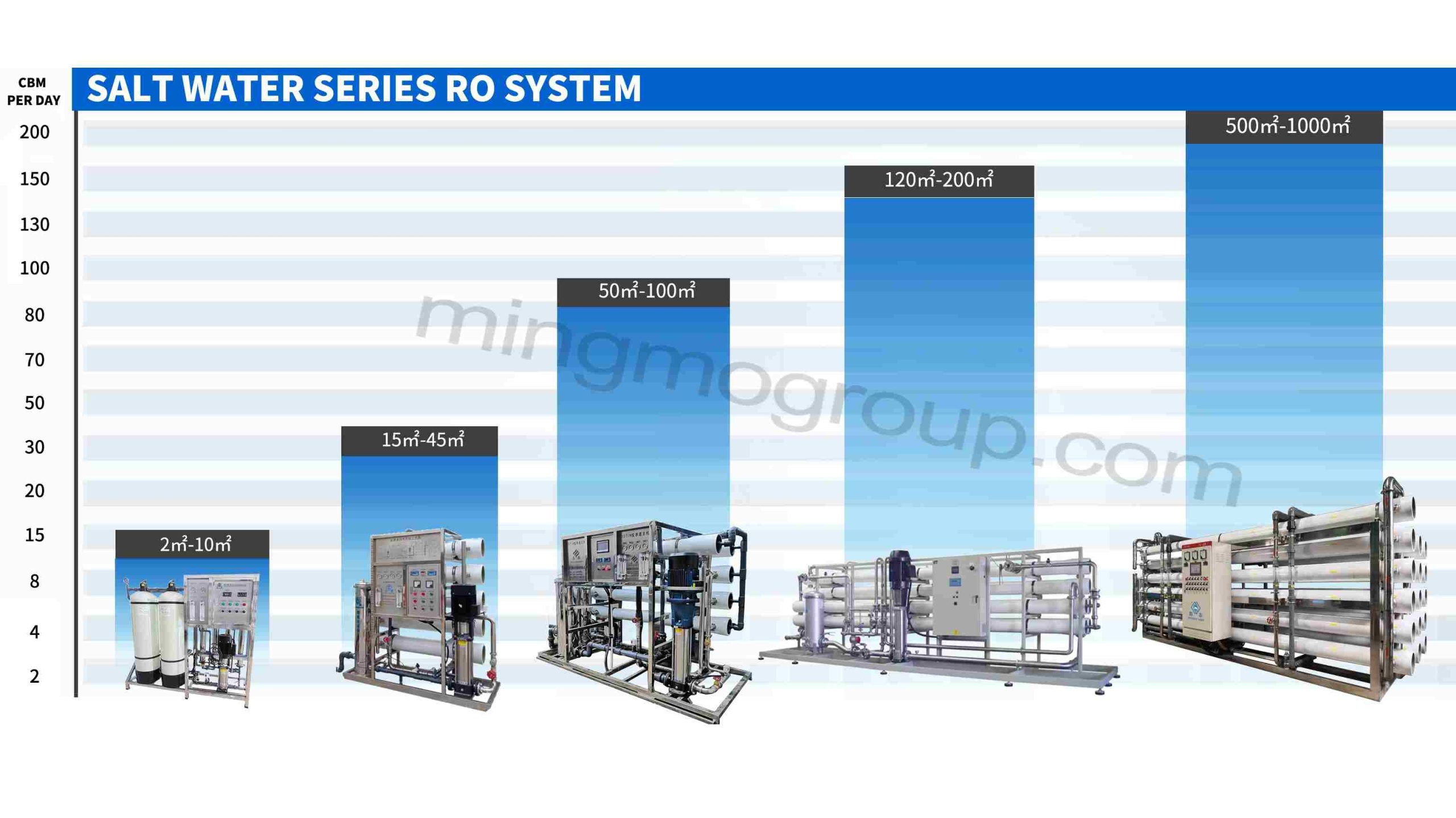 Brackish Water Reverse Osmosis Treatment System
Brackish Water Reverse Osmosis Treatment System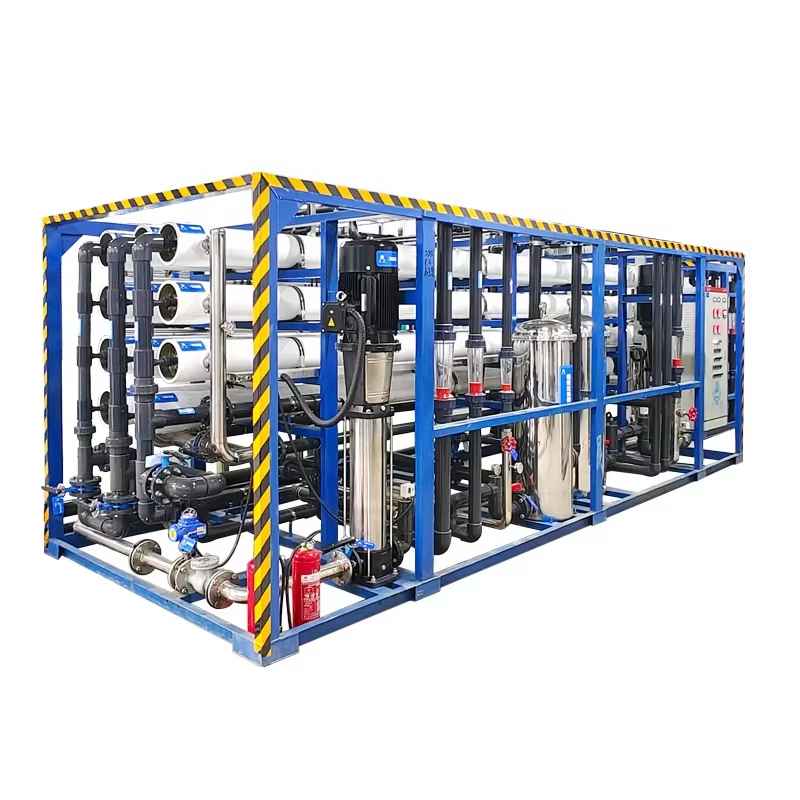 Large RO Desalination Machine
Large RO Desalination Machine Ultrafiltration System vs. Reverse Osmosis System: Which One Should You Choose?
Ultrafiltration System vs. Reverse Osmosis System: Which One Should You Choose?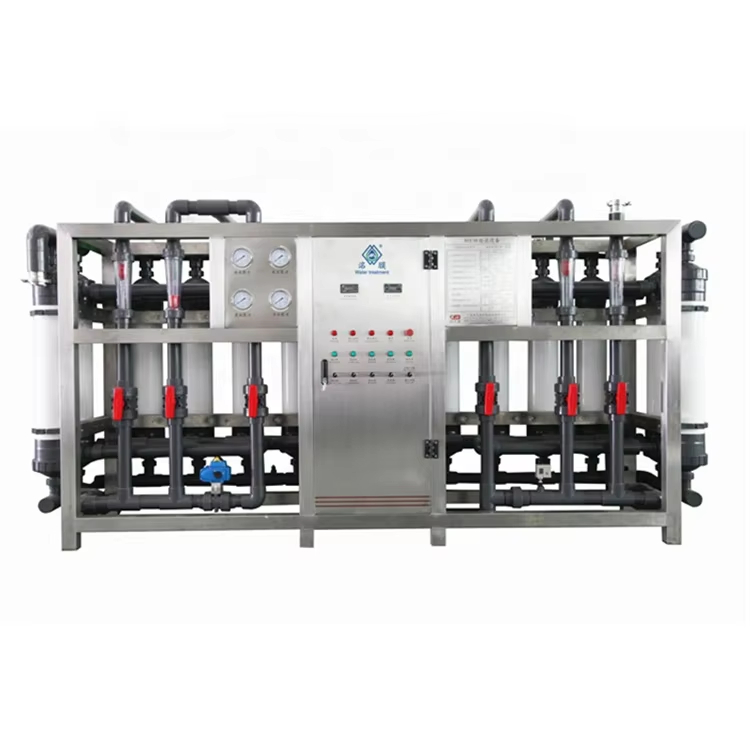 Ultrafiltration (UF) Water System
Ultrafiltration (UF) Water System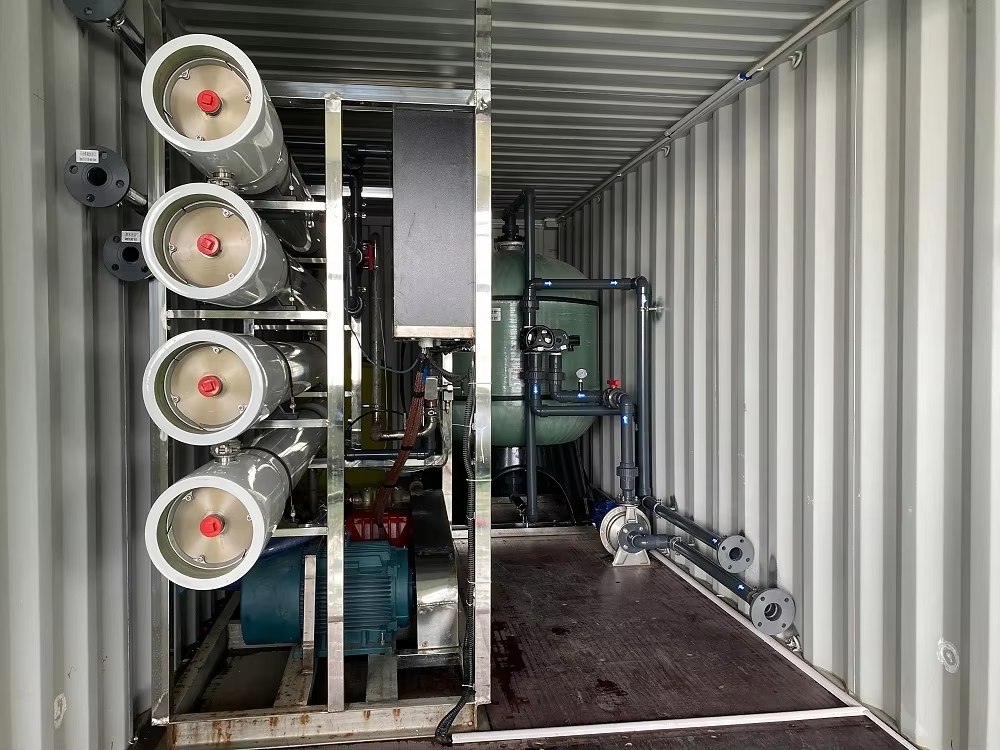 Containerized Reverse Osmosis Water Treatment Plant
Containerized Reverse Osmosis Water Treatment Plant Large Scale Industrial Reverse Osmosis System
Large Scale Industrial Reverse Osmosis System How to Choose Water Purifier for Well Water
How to Choose Water Purifier for Well Water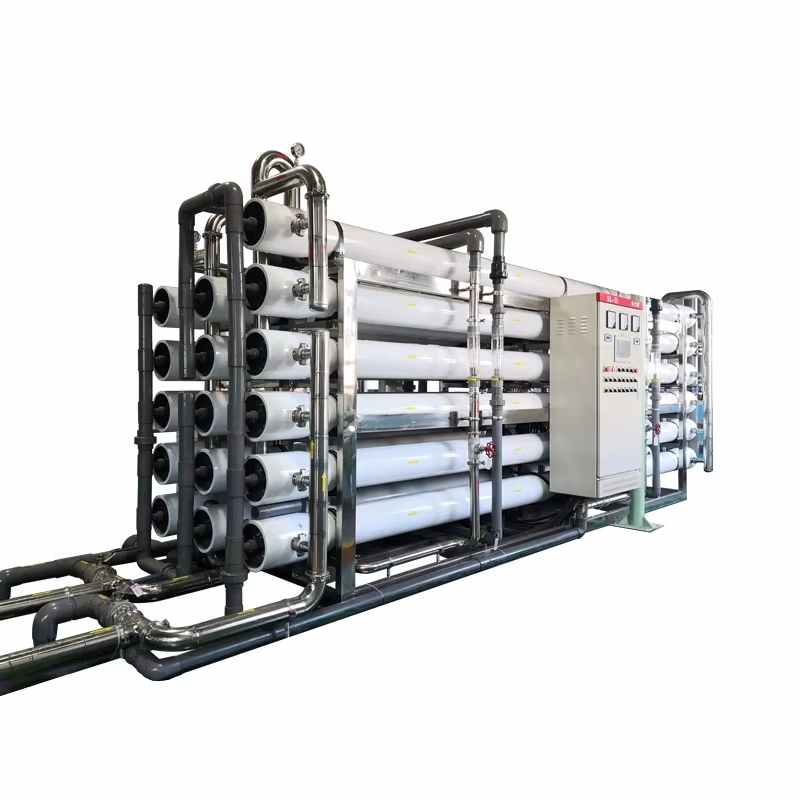 What Machine Can Remove Salt From Seawater?
What Machine Can Remove Salt From Seawater?